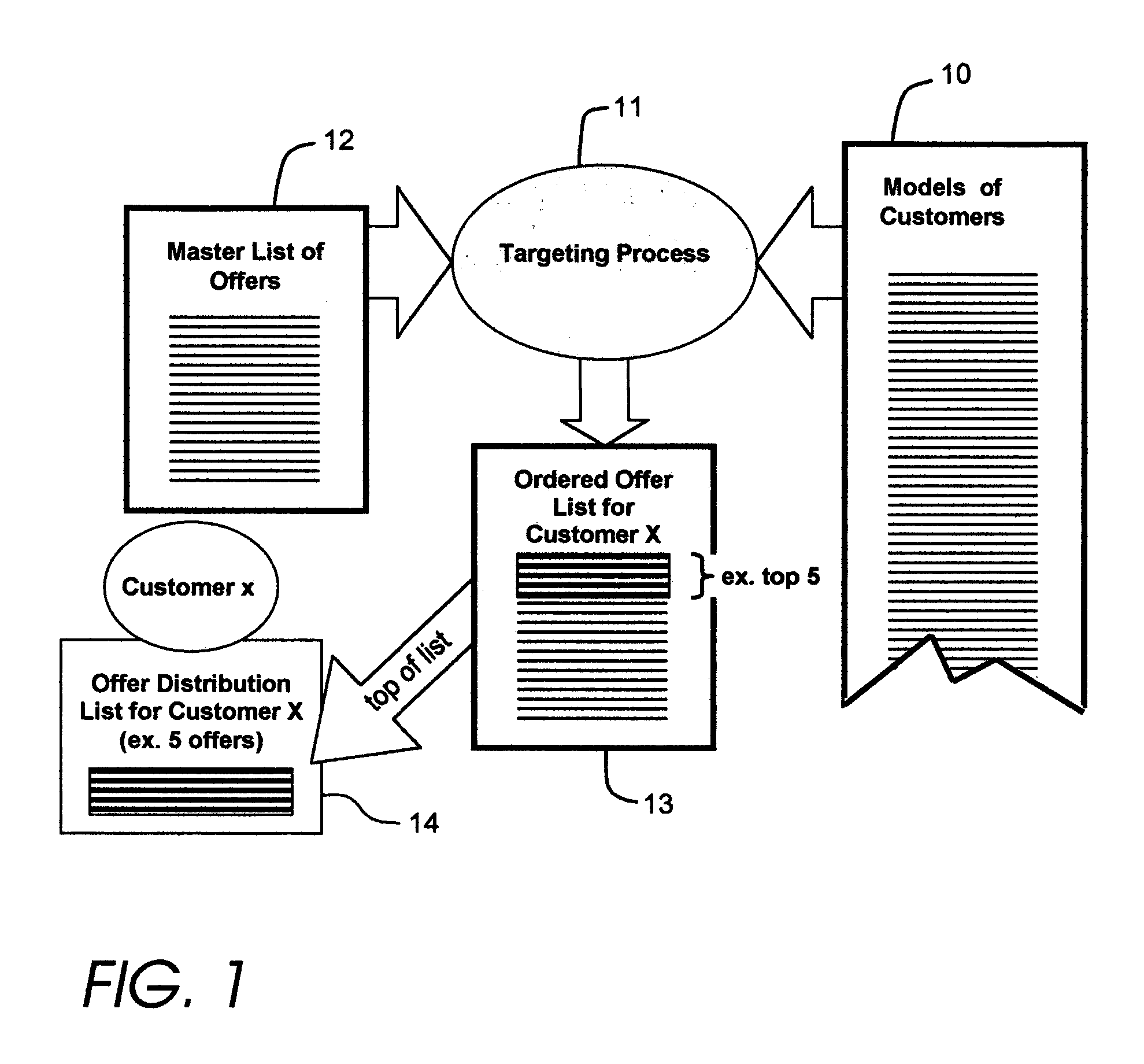The creation, distribution, and handling of promotional offers is generally at a considerable cost and can require considerable infrastructure, particularly where the offer is communicated through printed material such as fliers, inserts or paper coupons.
In addition, perhaps a more significant and far-reaching economic cost may arise from deterioration in customer relations as customers react more and more strenuously against the plethora of promotional offers bombarding them from email, direct mail, newspapers, and
the Internet, to mention only a few of many possible channels.
However, with the ever-increasing annoyance to the customer posed by increased numbers of unwanted offers, more precise and effective targeting is still needed.
With the increased tendency of customers to ignore promotional offers altogether, or even to terminate relationships with promoters who persist in that annoyance, past targeting methods are no longer adequate and can even be detrimental.
But over-promotion can have the opposite effect of angering loyal customers who are annoyed at a barrage of unwanted promotions.
Another problem of conventional promotional methods is that they do not lend themselves to use on popular electronic terminals that are becoming a common form of customer interaction.
New electronic terminal devices can have such limited capabilities that the distribution of general promotional offers is not practicable, and even limited distributions circumscribed by known targeting methods can be impractical or ineffective with many forms of
electronic communication.
Customers often avoid or even resent reading those very few offers if the offers do not consistently prove to be of personal interest to them as individuals.
Cell phones impose even more severe constraints than ATM machines.
Many customers consider their
cell phones to be personal and consider commercial messages on their
cell phones to be rude intrusions on their privacy.
In addition, cell phones have a very limited screen for viewing promotional offers and call for an inconvenient sequence of keystrokes to manipulate promotions on the screen.
Thus, for both the physical and relational reasons cell phones provide very little opportunity for successful promotional presentation with known technology.
These forms of targeting might appear to be adequate but they are not.
One is the
disadvantage of inundating some customers with many promotional offers while depriving others of any.
The result is that some customers are likely to receive a disproportionately large number of offers while others receive very few or none.
As a result of the disparity, many distributed offers or coupons are wasted, and some customers will be annoyed by a deluge of offers while others will be annoyed by the lack of attention.
Conversely, customers who receive very few offers will have very few to accept.
Thus the various goals and purposes of targeting are contravened, and targeting does not effectively achieve the purposes for which it was intended.
A further
disadvantage of the past targeting attempts is the inability to effectively control the number of promotional offers delivered to each individual customer while still retaining precision in targeting.
Although past methods may be able to establish and enforce several different distribution limits, the manner in which those limits are maintained can also impose extremely severe disadvantages.
The
disadvantage arises in the fact that those coupons withheld from a customer because of limits might well have been the very coupons most likely to be redeemed by that customer.
Therefore, the setting of limits in the past had the major disadvantage of distorting the targeting process.
A further disadvantage of the past targeting attempts is the statistical bias towards products that are more broadly used, rather than those more likely to be redeemed by each individual customer.
Without normalization, customer
purchasing statistics can misrepresent the intentions of the customer when confronted by a set of competing offers.
Therefore, statistical methods that do not consider the discount of the offer are not as precise as those that do.
Another disadvantage of past targeting attempts has been the lack of precision with sparse data.
Therefore,
purchasing behavior data can lead to large variance in estimated means with the resulting imprecision in targeting.
Another disadvantage of past targeting attempts has been the inability of the merchandiser to vary the distribution according to a preprogrammed merchandising strategy.
The growing customer resentment towards unwanted advertisements and unsolicited promotional offers is severely affecting the conduct of business.
Telemarketing has become annoying enough to the general public that new laws have been enacted heavily penalizing a telemarketer who calls a telephone that is registered on a “Do Not Call” list.
Unfortunately for the retailer, wholesaler, manufacturer, and customer, these attempts at curbing the intrusion of unwanted promotional offers tend to discourage promotional offers altogether without consideration of the individual differences between customers.
In short, past marketing strategies have been so annoying and intrusive that they have engendered new products and new laws to block the marketing strategies altogether.
 Login to View More
Login to View More  Login to View More
Login to View More 


